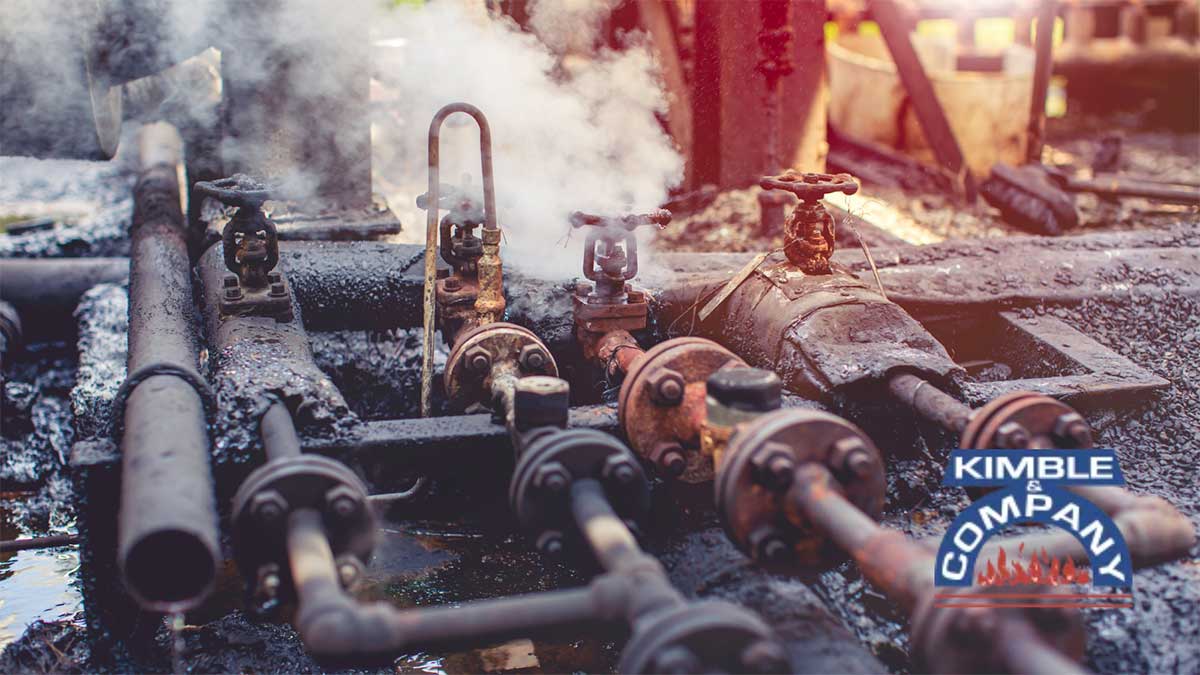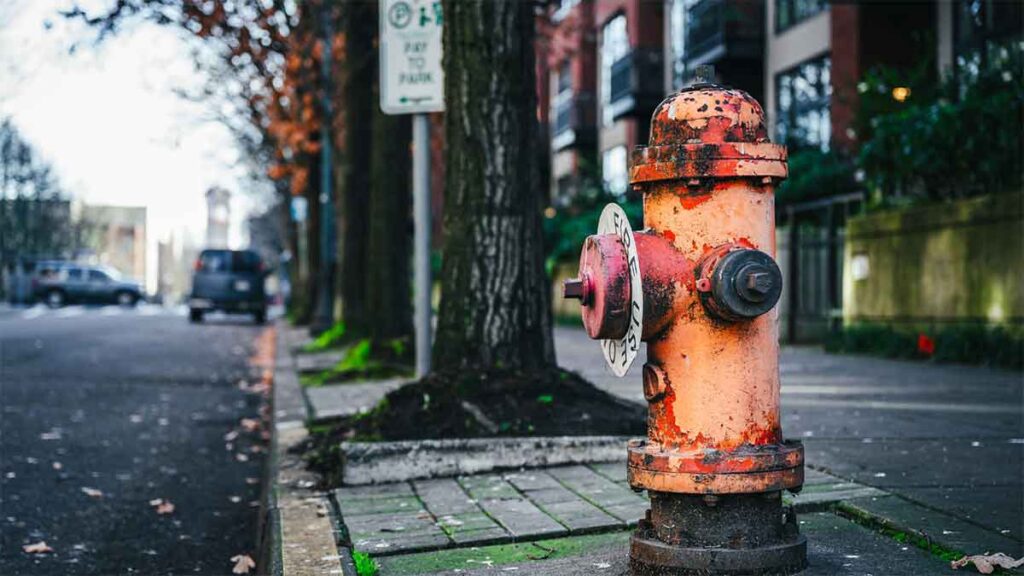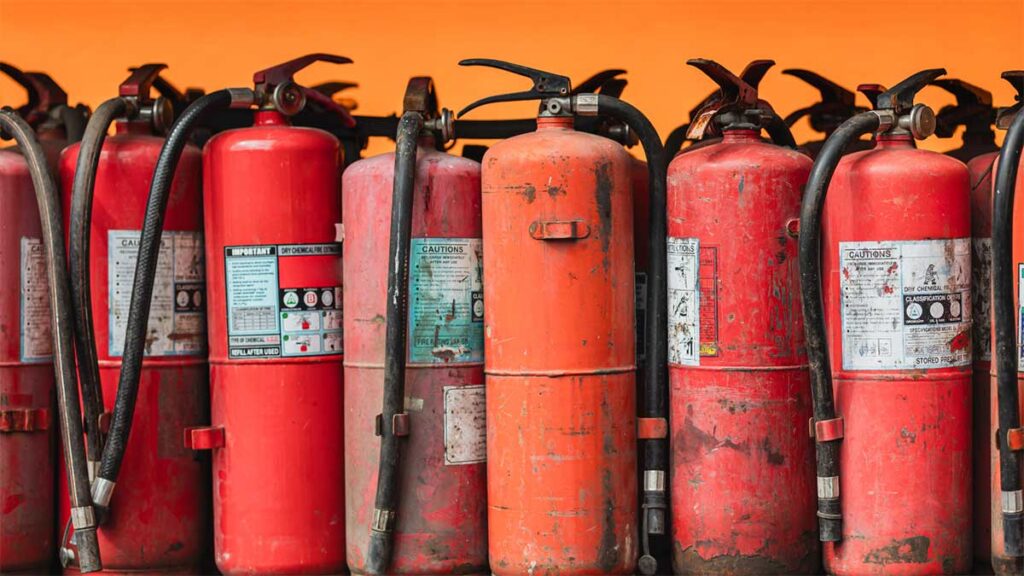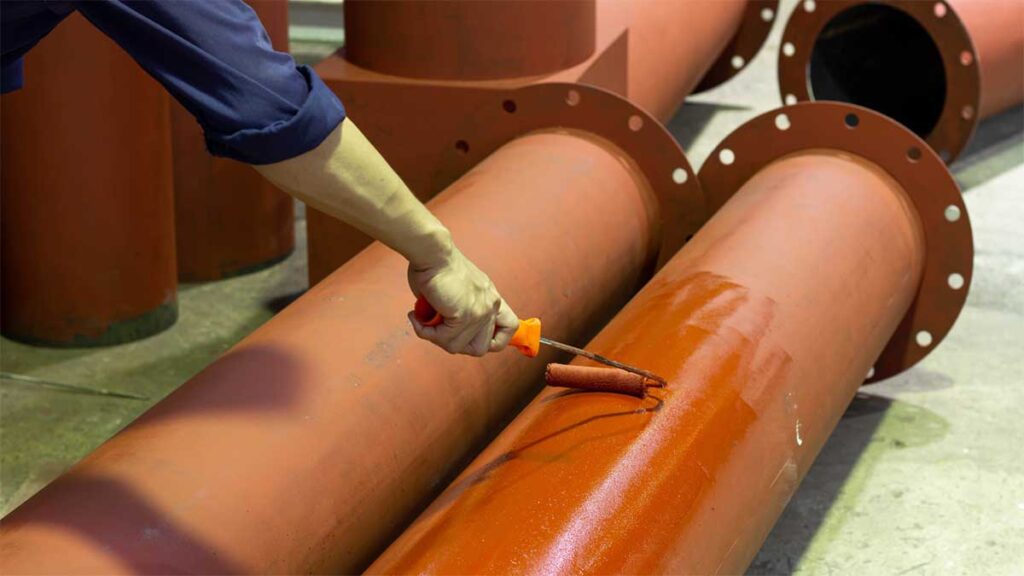It’s easy to overlook quarterly service for your fire protection systems. But skipping these checks can lead to serious, unseen problems. Corrosion, blockages, and hidden damage quietly accumulate over time, compromising the reliability of your system.
Corrosion, especially, often starts small, eating away at pipes where water and oxygen meet. Once it spreads, it weakens metal walls and creates pinhole leaks. In severe cases, it can block water flow altogether, stopping your system from working when it’s needed most.
Knowing how to deal with this scenario is essential. That’s why, in this blog, we’ll explore why regular maintenance is crucial for fire protection systems and how neglecting it can lead to corrosion that’s invisible to the eye. We’ll dive into the details of how issues like internal rust and scale buildup impact everything from sprinklers to fire alarm installation systems.
By understanding the unseen risks of neglecting service, you can take steps to ensure your system remains fully operational when you need it most.
Why Regular Maintenance is Critical for All Four Types of Fire Protection Systems
Fire protection systems rely on regular maintenance to function correctly and protect your building. From sprinklers to backflow preventers, each system is designed to keep the property safe, but corrosion and other issues can easily go unnoticed without proper care.
Diving deeper into this topic, regular service is so vital for all fire protection systems because of these pointers:
- Inspections ensure water flow is free from blockages.
- Corrosion is detected early to prevent leaks and failures.
- Pressure tests confirm fire pumps provide the proper water supply.
- Backflow preventers are checked to avoid contamination.
- Standpipe evaluations ensure reliable pressure on all floors.
Quarterly service is the best way to prevent these issues before they turn into significant problems. Keeping up with regular maintenance will help your systems perform optimally and meet code requirements, ensuring that they’re ready when needed.
Does Skipping Quarterly Maintenance Cause Corrosion in Fire Protection Systems?
To answer quickly, yes, skipping quarterly maintenance does eventually lead to corrosion.
Water sitting in pipes and components reacts with metal over time, causing rust and blockages. Without regular service, this process goes unchecked, and corrosion worsens, weakening the system’s integrity.
Corrosion doesn’t happen overnight, but it accelerates when left unattended. Fire protection systems often face high pressure and stagnant water, which can promote the growth of rust and microorganisms. Minor issues, such as cracks or scale buildup, can develop into more significant problems, including leaks or complete failure.
Following best practices for fire prevention means staying up-to-date with quarterly inspections. These checks catch early signs of corrosion and prevent minor issues from escalating. Regular service ensures your fire protection system performs reliably when needed.
The Hidden Corrosion Damage You Cannot See When Quarterly Service is Neglected
Corrosion often hides in places that are not easily visible, slowly eroding your fire protection system. Without regular maintenance, these hidden damages go unnoticed until they affect system performance. The real danger is that, by the time corrosion becomes visible, it may already be too late to prevent failure.
Here’s a closer look at some of the most common and problematic corrosion issues that develop when quarterly service is skipped.
Sprinkler Pipe Network Interior Deterioration and Blockage Formation
Over time, water flowing through sprinkler pipes can react with metal surfaces, causing rust to form inside. This corrosion builds up as flakes and debris, eventually leading to blockages that obstruct water flow. Blockages in pipes limit the amount of water that can be delivered during an emergency, reducing the system’s effectiveness.
In addition to blockages, the interior of the pipes can begin to deteriorate. Corrosion weakens the pipe walls, creating the risk of leaks or bursts under pressure. Even small leaks can lead to significant problems, like water damage or a complete failure to suppress a fire.
When maintenance is neglected, this process continues unchecked. Quarterly service ensures these issues are caught early, allowing for cleaning or repairs before the damage becomes significant.
Fire Pump Impeller and Housing Corrosion That Reduces Water Pressure
Fire pumps are crucial for delivering high-pressure water to the system during a fire. The impellers and housing inside the pump are in constant contact with water, making them vulnerable to corrosion. Over time, rust and mineral buildup can reduce the pump’s efficiency, resulting in lower water pressure and reduced flow rates.
When the impeller and housing begin to corrode, the pump struggles to maintain the necessary pressure during a fire emergency. This pressure drop can result in insufficient water supply to the sprinklers or standpipe system, leaving your building unprotected when it matters most.
Skipping quarterly maintenance means these issues remain hidden, preventing early detection and potentially leading to more severe problems. Regular service checks ensure that the pump stays in optimal condition and can perform under pressure when needed.
Standpipe System Internal Scaling and Metal Degradation
Standpipes are a crucial component of high-rise fire protection. They rely on water pressure to provide reliable access to firefighting resources on every floor. Over time, minerals in the water form scale inside the pipes, reducing the diameter and obstructing flow.
As scaling builds up, it can trap moisture and cause internal metal degradation. The combination of scale buildup and corrosion compromises the structural integrity of the pipes, rendering them more susceptible to leaks or failures during emergencies. This type of damage is difficult to detect without regular inspections, and by the time it’s noticed, it may be too late to repair.
Quarterly maintenance includes flow tests and inspections that help identify scaling early on, allowing for necessary cleaning or treatment to restore the system’s performance.
Backflow Preventer Valve Seat Corrosion and Seal Failure
Backflow preventers are critical for maintaining the safety of potable water supplies. Their role is to prevent contaminated water from entering the public water system. However, over time, the valve seats and seals inside the backflow preventer can corrode, leading to their failure.
When corrosion weakens the valve seats, it leads to leaking or improper sealing, risking contamination. A malfunctioning backflow preventer can also affect the system’s ability to deliver water when needed during a fire. This is especially concerning for buildings that rely on water to fuel fire protection systems.
Investing in fire protection measures involves regularly inspecting and servicing backflow preventers to ensure they function optimally. Routine inspections detect early signs of corrosion, ensuring they function correctly and meet safety standards.
Control Panel Wiring and Connection Point Oxidation Damage
The electrical control panels for fire protection systems rely on a network of wiring and connections to operate alarms, pumps, and valves. Over time, moisture and oxidation can damage these wires and connectors, causing electrical failures or miscommunications within the system.
Corroded or oxidized wiring can lead to unreliable system operation, preventing alarms from sounding or pumps from activating when needed. This can be disastrous in an emergency where every second counts. Regular maintenance identifies oxidation issues early and keeps the system functioning correctly.
Quarterly service includes checking wiring and connections to ensure that all electrical components are free from corrosion and operating at full capacity.
What Quarterly Service Includes Under NFPA 25
Quarterly service is more than just a quick look at your fire protection system. According to NFPA 25, inspections follow a detailed checklist designed to keep every part of the system functioning as intended.
These checks ensure that your system meets code requirements while addressing hidden issues that could develop into larger problems if left unaddressed.
Some of the most critical components covered during quarterly service include:
- Visual inspection of fire sprinkler heads, piping, and valves
- Testing of alarm devices to confirm proper signaling
- Pressure readings on gauges for pumps and standpipes
- Inspection of backflow preventers for leaks or damage
- Functional checks of control valves to verify they remain open
Quarterly inspections under NFPA 25 are designed to spot minor issues before they affect system performance. They also help extend the lifespan of equipment while keeping buildings compliant with safety codes.
Regular service reduces liability, improves reliability, and ensures your system works when needed. Skipping these checks leaves your building at greater risk.
How Kimble & Company Prevents and Detects Corrosion Before It Becomes Catastrophic
Kimble & Company has spent decades perfecting methods to detect and prevent corrosion before it leads to catastrophic failures. Our thorough inspection process ensures that even the most minor signs of deterioration are addressed promptly.
Let’s examine how our expertise and processes help keep corrosion under control and prevent system failures.
Four Decades of Proven Inspection Protocols and Early Detection Methods
With over 40 years of experience, Kimble & Company has developed detailed inspection protocols designed to spot early signs of corrosion and system wear. These protocols have been refined to identify even the most subtle issues before they become significant problems.
We train our technicians to look for the first signs of deterioration in every part of the system, from pipes and pumps to electrical panels. This proactive approach ensures that issues are detected and addressed long before they compromise system performance.
Professional Water Testing and System Flushing Procedures
Water quality plays a key role in preventing corrosion in fire protection systems. Our water testing services analyze the levels of oxygen, pH, and minerals in the water. High levels of minerals or oxygen can accelerate corrosion, while improper pH levels can lead to scaling and pipe degradation.
In addition to testing, we perform system flushing to remove sediment, debris, and mineral buildup. Flushing helps prevent blockages and reduces the risk of corrosion inside pipes. Regular water testing and flushing are crucial steps in maintaining optimal water quality and prolonging the system’s lifespan.
Advanced Corrosion Prevention Treatments and Protective Applications
Kimble & Company also offers advanced corrosion prevention treatments that help protect your system. We apply specialized coatings and corrosion inhibitors to the interior of pipes, pumps, and other components to reduce rust buildup and extend their lifespan.
Our protective applications are tailored to each system’s unique needs, ensuring that the fire protection system remains corrosion-free even in challenging environments. These treatments are a proactive way to prevent long-term damage and costly repairs.
Comprehensive Documentation and Code Compliance Assurance
At Kimble & Company, we provide comprehensive documentation of every inspection, test, and treatment. This includes detailed reports on system performance, water quality, and corrosion control measures. Maintaining a thorough record not only facilitates ongoing maintenance but also ensures compliance with local codes and regulations.
Our clients can trust that their fire protection services are up to code and that any corrosion or wear has been addressed. These records are also valuable during audits or insurance assessments, providing peace of mind that the system is fully maintained and compliant.
Call Us Today!
Corrosion and wear in fire protection systems are significant issues that can be challenging to identify without regular inspections. Skipping quarterly service only makes these problems worse, putting your property and safety at risk.
Kimble & Company recognizes the importance of preventing corrosion before it becomes a significant issue.
If you’re ready to protect your building and ensure your fire protection systems are operating optimally, call us today. Our expert team is prepared to provide the professional assistance you need to maintain a fully functional, corrosion-free fire protection system.




